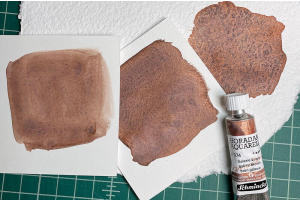We use cookies to make your experience better. To comply with the new e-Privacy directive, we need to ask for your consent to set the cookies. Learn more.
Cheap Joe’s Art Stuff Art Blog
Tips, Tricks, Thoughts, and inspiration from across the art spectrum.
Oil Painting Tips for Those New to Oils

Hello Artists, beginners and experts alike!
This week, our blog post is inspired by a request from Tanya M. Nevin of Van Gough's Ear Paint Studio (check out her work!). She recently inherited a ton of oil paints from her late father, also an artist. Tanya has been painting with acrylics for over twenty-five years and she's not quite sure how to transition into working with oils. Well, Tanya and I are actually in the same predicament!
I've never really used oil paints heavily either. So, what do we do when we don't know what to do? I start by asking questions of others that do. I was all to happy to take this opportunity to research the fascinating world of beginner oil painting and share the top 5 oil painting tips I found most helpful.
Let's dive in and learn some great first-time oil painting tips together, shall we?
1. Prepare Your Painting Space
Oil paints themselves and the solvents you will need to clean brushes with will come with strong scents; as such, you'll want the space you'll be painting in a well-ventilated area. If possible, make sure there is also plenty of room to keep all the items you need in reach and ready, like mediums, painting surfaces, turpentine, brushes, paints, etc.
If possible, you may want to make sure your oil painting space is entirely separate from your acrylics or watercolors. In some cases, it's incredibly easy to grab a tube of Opera Rose watercolor instead of oil because the tubes look very similar.
2. Slow and Steady
There's nothing more exciting than trying something new and learning a new art medium. However, it can frequently go from exciting to overwhelming very quickly if you jump right into trying to get all the colors, brushes, canvasses, etc. There's no shame in starting small and slowly.
It's always good to start with a small painting surface and a limited paint palette to experience the way the paint applies and feels on the brush and how mixing it differs from other mediums you are familiar with.
If you're looking for an excellent budget option, did you know that Gamblin creates a free paint called Torrit Grey? Torrit Grey is Gamblin's solution to ensuring high-quality pigments that float in the air of their factories and get filtered away from workers to keep them safe. To keep the environment safe, Gamblin re-uses these pigments to create a one-of-a-kind color tube of grey. Each shade of grey is different, and they also run an annual contest that artists can enter for a chance to win free stuff.
3. Prime your Surface
If you don't have some Joe's Prime Stretched Cotton Canvas or Joe's Prime Cotton Canvas Rolls, which are 100% cotton duck that has all been pre-primed for painting with oils, you will absolutely need to prime your surface. Why?
Oil paints have oils in them, and when you paint with them on an unprimed surface, the oils begin separating from the paint. Once they separate, they start seeping into an unprimed canvas, wood, or paper and can quickly ruin the piece of art you've worked so hard to create. Luckily, at Cheap Joe's, not only can you get pre-primed surfaces, but you can get highly budget-friendly primer options like our Joe's Prime Really Good Gesso, which starts at $3.59 for an 8 oz jar and can be used to prime for oils and acrylics.
4. "Thick over Thin?" "Fat over Lean?"
Have you discovered the phrase "fat over lean" when researching oil painting tips yet, but have no idea what that means? These phrases refer to the layers in which you should try and paint with oils. Thinner paints with less oil for the bottom, or first play, then thicker, more oily paints go over the thinner layer. This ensures your painting dries at the correct rate. If your painting dries at the incorrect rate, you could have cracking.
To make paint 'fatter' or oilier, you add more oil to it, and to make it 'leaner' or thinner, you add a solvent such as turpentine or a fast-drying medium. This helps each layer absorb oil from the layer above it evenly.
If you didn't know it already, certain colors are known to have faster drying times too, and they can be incorporated into your lower layers. Paints that contain Cobalt, Manganese, and Lead can be added to other paints to speed up the drying process. On the other hand, certain paints are known for drying slowly, such as Quinacridones, and should be avoided on lower layers.
5. Keep Clean
Oil paints, like many art mediums, can get extremely messy. In some cases, depending on the ingredients, oil paints can be pretty toxic if ingested or absorbed into your skin—but don't let that frighten you! It's all about keeping your work area and self as clean and organized as possible (and out of reach of children and pets) while learning how to dispose of everything responsibly and adequately.
Paints, mediums, palettes, and anything else with oil paint should be disposed of in or at a Hazardous Waste Facility. Rags, paper towels, and items with less mess on them can be contained in a glass jar or a fire-safe trash container. But the containers must be fire safe because oil paints and solvents are highly flammable, and they could spontaneously combust when drying out!
Hopefully, these five beginner tips will help you transition into your new oil paints, Tanya! I can't wait to see what you learn and all you can do! Good luck and good painting!







